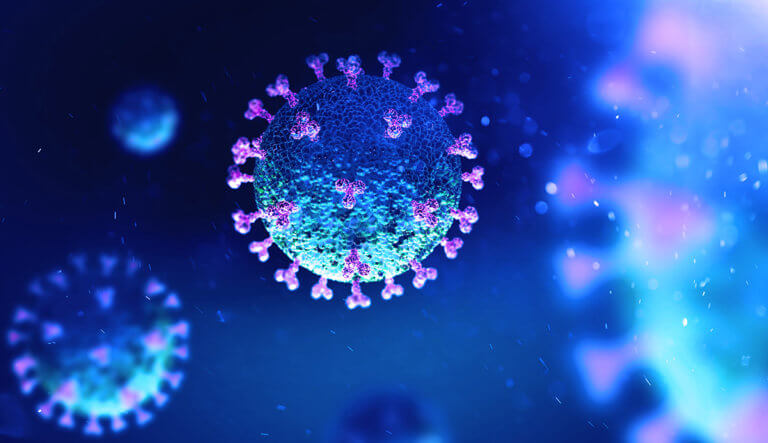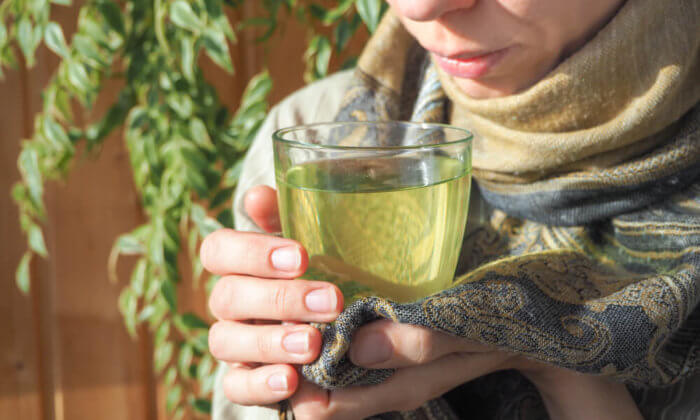10 Things You Need To Know About COVID-19: A Survival Guide
| | Reading Time: 6 minutes

Coronavirus pandemic 10 action steps: What you need to know, and do now, to prevent and treat mild symptoms of COVID-19.
“It is extremely important that we take the trouble to understand viruses.”
— Frank Ryan, Virusphere
Gathered from my studies and research in China from the mid-80s to the mid-90s, extensive journal reviews, decades of clinical experience treating viral illnesses, and two books about viral infections: Viral Immunity and Beating The Flu, I took the understanding of viruses very seriously. In this article, I distilled the most important points about the current coronavirus pandemic into ten action steps: what you need to know, and do now, to prevention and treat mild to moderate symptoms of COVID-19, the infectious respiratory disease caused by SARS-CoV-2 virus.
- AVOID EXPOSURE If you don’t get exposed to SARS CoV-19, you won’t get infected. I agree with infectious disease experts: the best things to do are to stay home and practice social distancing. When you have to go out, be alert to people who look ill, are coughing or sneezing, or have a runny nose and watery eyes. Keep your distance of at least six feet from someone else. Wear a mask. Avoid crowds. Limit domestic and international air travel. You already know all that, but did you know that if you get exposed and become infected, and if you recover, you have immunity against future coronavirus infections. Getting vaccinated is like getting a mild case of a viral infection resulting in future protection. But we don’t have a vaccine for this coronavirus. You’re on your own with this one. And, even when we have a vaccine, which could be more than a year away, it may not be one hundred percent effective. Don’t count on a vaccine soon.
- DON’T TOUCH THINGS We touch surfaces all day like doorknobs, rails, gas pump handles, and ATM screens. Wearing gloves helps but is not always practical. Especially, avoid touching your eyes, nose, or mouth. Avoiding touching things requires a unique awareness that we don’t usually have to consider. But, during this once in a century pandemic, make the extra effort and reduce your chances of getting sick.
- WASH YOUR HANDS Since we touch things all day long, washing your hands is a time-tested way to prevent infections. Use soap and running water to scrub your hands for at least 20 seconds. Don’t count on doing it once a day. Frequent handwashing helps reduce spread. If you can’t wash, use a hand sanitizer or 70% isopropyl alcohol. Carry a small spray bottle with you and keep one in your car. A quick spritz is better than nothing in you’re in a hurry.
- WIPE SURFACES Since we can’t always avoid touching things, disinfect surfaces. Use dilute Clorox bleach, Lysol spray, 70% alcohol, or soap and warm water to keep your countertops, desk, doorknobs, bathroom sinks, and all commonly touched surfaces disinfected. Carry individual alcohol prep pads in your briefcase, backpack, or purse. You can also use hydrogen peroxide, or hospital-grade grapefruit seed extract like Citrus II. Spray your cell phone with alcohol or use an ultraviolet sanitizer.
- SUPPORT INNATE IMMUNITY Social distancing and hand washing help reduce your chance of COVID-19 infection but don’t improve your resilience to the virus. A healthy immune system helps resist infection, reduces the severity of symptoms if you get sick, and shortens sick time. To keep your immune system functioning, eat a healthy diet, drink enough fluids, and take vitamins C and D3, and the trace minerals zinc and selenium. Vitamin C supports both innate and adaptive immunity. Zinc and selenium restore innate and adaptive immunity and improves antiviral immunity. Vitamin D3 modulates innate and adaptive immunity, enhancing resistance to infection.
Essential Immune Supplements:
• Vitamin C (ascorbic acid) 500-1,500 mg twice daily
• >Zinc (zinc picolinate or gluconate) 15-30 mg twice daily
• Selenium (selenomethionine) 200 mcg twice daily
• >Vitamin D3 2,000-5,000 IU daily
Besides a healthy diet, regular exercise, and immune-boosting supplements, resilient immunity requires enough sleep. During the stay-at-home period, establish a daily routine. Go to bed at the same time. Allow 8-10 hours of restful sleep. Young children need 12 hours and teenagers for at least 9 hours. Seniors and adults with an underlying health condition may require 10 hours of sleep, as well as rest periods during the day.
- RECOGNIZE COVID-19 SYMPTOMS Some have no symptoms but are still contagious. However, most infected by coronavirus experience flu-like symptoms including a fever, dry cough, shortness of breath, fatigue, and malaise (feeling “sick”), joint and muscle achiness, and also watery red eyes. Some may even have diarrhea and nausea. Severe symptoms include lethargy, difficulty breathing, chest pain, tightness or pressure, and bluish lips due to lack of oxygen. If you suspect you have COVID-19 illness, and have moderate to severe symptoms, call your primary care physician’s office or your state health department. You may need to go to the hospital emergency room.
- SELF-QUARANTINE If you get sick or think you were exposed, the first rule is not to infect others. Stay home and take care of yourself. Remember, if you get infected, and recover, there’s a post-symptomatic “shedding window” of 8-20 days when you could relapse. And even if asymptomatic, you still could transmit infection. So, stay home avoiding contact with others until completely non-contagious. According to the CDC, you’re not considered over the disease until you’re without a fever for three days and at least seven days since your first symptoms. Technically, you’re not rid of the virus until you’re symptom-free and test negative twice.
- MANAGE SYMPTOMS Should you get sick with COVID-19, you can manage your symptoms at home because 80 percent have mild or moderate symptoms.• Track your temperature. About 88% of people with laboratory-confirmed COVID-19 have a fever. When you take your temperature, write down the day, date, and time. Log your temperature readings on a spreadsheet or keep a journal, or on your phone. Tracking your temperature provides a pattern of infection progression that could be useful to your doctor if you need medical attention. Take your temperature twice daily, morning and evening. The average normal temperature is 98.6 degrees. You have a fever if your temperature is over 100 degrees.• Check your Specific O2 (SpO2). A pulse oximeter gives an estimate of the oxygen saturation in your blood. It’s a simple device that couples on a fingertip. Normal oxygen saturation is between 95-100 percent. COVID-19 causes lung inflammation that reduces SpO2. A reading below 94 is cause for concern. You can buy an inexpensive oximeter at a local pharmacy or on Amazon.• Monitor other symptoms. Is your fever, headache, joint pain, muscle aches, or fatigue getting worse, staying the same, or improving? Enter any changes in your journal. Monitoring all symptoms provides a timeline of progression and resolution of illness. Atypical symptoms may be a sign that infection triggered other health problems.• Practice safe personal hygiene. Keep up with frequent handwashing, wiping surfaces, and covering your coughs and sneezes. Use paper towels and tissue paper disposed of in zipper locked plastic bags. Launder washcloths, sheets, and dishcloths in hot water with detergent. High hear drying for 30 minutes can kill viruses. Check your dryer’s settings to see if it has an antibacterial cycle.• Self-isolate. If you live with others and get sick, stay in one room away for others at home. Wear a facemask when you need to move around the house. Don’t share towels or dishes. Stay in bed. Rest.
• Keep hydrated by drinking enough bottled or filtered water. Avoid coffee and tea because of their diuretic effect causing increased urination. If you have a fever, add electrolytes or squeeze juice from a fresh lemon into your water.
• Eat easy to digest foods. Old-fashioned chicken soup, rice congee, and steamed vegetables are good choices. You’ll find recipes in my book, Beating The Flu.
If symptoms worsen, get help. Call your doctor’s office, or if you don’t have a general practitioner, call your state or county health department. Go to an urgent care clinic or a hospital emergency room, or call 911 if you become very ill with high fever, difficulty breathing, or become severely weak.
- GET TESTED The “gold standard” for coronavirus testing is real-time reverse transcription-polymerase chain reaction (rRT-PCR) testing, often called “PCR.” It’s an inconvenient test because a sputum sample, or a nasal or throat swab is necessary, and is usually done in specialized settings with lab technicians in protective gear to prevent spread. Results take a few hours to a couple of days and give a positive or negative result. It’s an accurate test to tell if you are infected with the coronavirus. Newer tests use a blood sample to provide a positive or negative response to IgG (past exposure) and IgM (current activity) antibodies. These tests determine current or past infection based on the body’s immune response. They’re useful to establish a population count of the recovered, and likely immune, from the uninfected. For severe cases, a chest x-ray or CT scan is necessary to tell the extent of lung damage.
- TAKE NATURAL ANTI-INFLAMMATORY COMPOUNDS Symptom management is the foundation for self-care. However, to beat coronavirus, you not only need to support your immune function but manage inflammation. Viral infection can trigger out-of-control inflammatory reactions by your immune system. Luckily, anti-inflammatory compounds are abundant in many plants. Common flavonoids like resveratrol and quercetin are useful. Others include EGCG from green tea and cat’s claw from Uncaria tomentosa. The Chinese and Ayurvedic herb Andrographis has both anti-microbial and anti-inflammatory properties.
• Resveratrol (as trans-resveratrol) 200-500 mg twice daily
• Quercetin 250 mg twice daily
• EGCG (epigallocatechin gallate) 300 mg twice daily
• Cat’s Claw (Uncaria tomentosa standardized to 3% oxindole alkaloids) 450 mg twice daily
• Andrographis paniculate (standardized to 33% andrographolides) 300-600 mg twice daily
COVID-19 is highly transmissible and potential a deadly infection. Remember, knowledge is power. Don’t get overwhelmed with information. Listen to good science but also use practical solutions to avoid infection and to beat coronavirus if you get sick.

